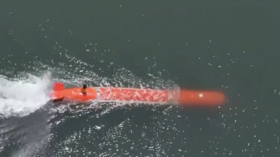ET spotting goggle-plex goes to Oz & S. Africa

A battle for the world's largest radio telescope has ended in a draw, with both Australia and South Africa winning the right to host the unique project. When completed in 2024, it could allow scientists to detect signs of extraterrestrial life.
Square Kilometre Array, or SKA will be 50 times more sensitive than today's most powerful radio telescopes.Scientists believe it will “transform the view of the Universe”, allowing us to “see back to the moments after the Big Bang and discover previously unexplored parts of the cosmos,” said Dr. Michiel van Haarlem, Interim Director General of the SKA Organisation."Connecting to discoveries from the Large Hadron Collider, we will get a consistent picture of what the universe is made of," John Womersley, Chair of the Board of Directors of the SKA Organization, was cited by Reuters. Moreover, SKA will be able to detect weak signals that could indicate the presence of extraterrestrial life.The most powerful telescope ever will consist of 3,000 dishes, each 15 meters wide, together with many more antennae that will stretch over 3,000 km (1,864 miles). "The majority of SKA dishes in phase one will be built in South Africa, combined with MeerKAT [a super-sensitive radio telescope currently under construction]," the committee said. "Further SKA dishes will be added to the… array in Australia. All the dishes and the mid-frequency aperture arrays for phase two of the SKA will be built in Southern Africa, while the low-frequency aperture array antennas for phases one and two will be built in Australia."The target construction cost is €1,500 million. There has been a long battle between three possible states – Australia, New Zealand and South Africa – to host the mammoth star-gazing tool.Despite Australia’s concerns over high rates of violent crime in South Africa, the SKA advisory committee identified the state as the preferred site.The construction of SKA is scheduled to start in 2019.















